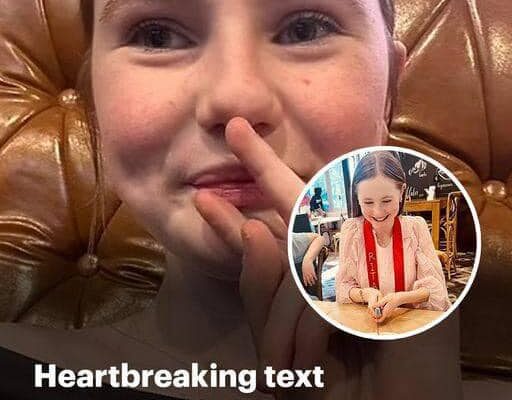In a tragic and heartbreaking incident, a 12-year-old girl named Charlotte, a student from Sydney, Australia, took her own life after enduring relentless bullying. Her devastating final message sent shockwaves through her family, school, and the broader community, raising urgent questions about bullying and mental health in young people.

On the night she took her life, Charlotte sent a heartbreaking text to her friend with a photo of herself in tears, accompanied by the simple message: “I am sorry”.1 This message would be her final communication. Despite her friend’s increasingly worried replies, Charlotte never responded. Her silence marked the tragic end of her life, leaving her loved ones grappling with unimaginable grief.
A Family’s Unbearable Loss

In the days after Charlotte took her life, her family released a statement expressing their immense pain and sorrow. “We lost our baby girl in the most awful of circumstances. She was just 12 years old,” they wrote. Her family also revealed that Charlotte had been a victim of persistent bullying at Santa Sabina College, and that her goodbye note specifically referenced the torment she faced at school.
The family’s message was clear: “We will not let our daughter’s memory be swept under the carpet.” They demanded that the bullying that drove Charlotte to despair be taken seriously, calling for accountability and change.
Years of Complaints Ignored

Charlotte’s family had reportedly raised concerns about the bullying for over two years, but their cries for help went largely unanswered. In one instance, Charlotte was found crying in the school’s bathroom, telling another student, “I don’t want to be here.” Her family described how her pain was overwhelming, with Charlotte once telling her mother, “My body fills with pain until my heart explodes”.
investigating and receiving denials from the involved students. For Charlotte’s family, these responses were devastatingly inadequate.
Bullying is A Growing Crisis
Charlotte’s life ending sheds light on a broader issue: the growing crisis of bullying and its impact on young people. Studies have shown an alarming increase in suicides among children aged 8 to 12, particularly among girls. Data from a Nationwide Children’s Hospital study revealed that preteen suicides have been rising by about 8% annually since 2008, with girls experiencing the sharpest increase.2
Suicide is now the fifth leading cause of death for preteens in the U.S., highlighting the urgent need for effective interventions and mental health support systems for young people.
Mental Health Warning Signs in Children

Charlotte’s heartbreaking story underscores the importance of recognizing mental health warning signs in children. Experts emphasize that changes in behavior—such as isolation, sudden mood swings, or talking about wanting to disappear—should be taken seriously. Children and teens who express a desire to end their life or show signs of hopelessness need immediate intervention.3
Dr. Heather Huszti, a chief psychologist, stresses the importance of open conversations about mental health. “Talking openly about mental health and suicide can save children’s lives,” she said. For Charlotte, timely intervention may have made all the difference.
Read More: Woman’s Husband Created a ‘Schedule’ for Her To ‘Become a Better Wife’ – This Was Her Response
A School’s Response and Controversy
Santa Sabina College responded to the tragedy by addressing the community in an email, expressing concerns about allegations of bullying. Principal Paulina Skerman urged those with information to come forward through formal channels, stressing the need for accurate reporting. “Speculation and gossip are hurtful and unnecessary,” she wrote. However, the school’s response was seen by some as insufficient, and Charlotte’s family remains frustrated by the lack of accountability.
Charlotte’s mother, Kelly, also expressed a poignant message of forgiveness. “I must stress and I beg, I do not wish any little girls to feel responsible for this,” she wrote, emphasizing that those who bullied Charlotte likely didn’t understand the full impact of their actions, especially since it ended Charlotte’s life.
An Urgent Call for Change

Charlotte’s death is a devastating reminder that bullying can have fatal consequences. Her family has vowed to keep fighting for justice in her memory, insisting that the bullying culture at the school, and in schools more broadly, must be addressed. They ask the painful question: “How many more children need to lose their lives before they get it?”.
For many parents, Charlotte’s life story serves as a wake-up call. Bullying is not simply a phase to be ignored or brushed aside. It can lead to irreversible damage if left unchecked.
Conclusion

Charlotte’s story is a tragic example of the extreme consequences of bullying and the pressing need for effective mental health support for children. Her final text, a cry for help that went unanswered, has left a deep scar on her family, her school, and her community. Moving forward, it is crucial to ensure that no child’s pain is dismissed, and that schools, parents, and communities come together to address the bullying epidemic and provide much-needed mental health resources.



